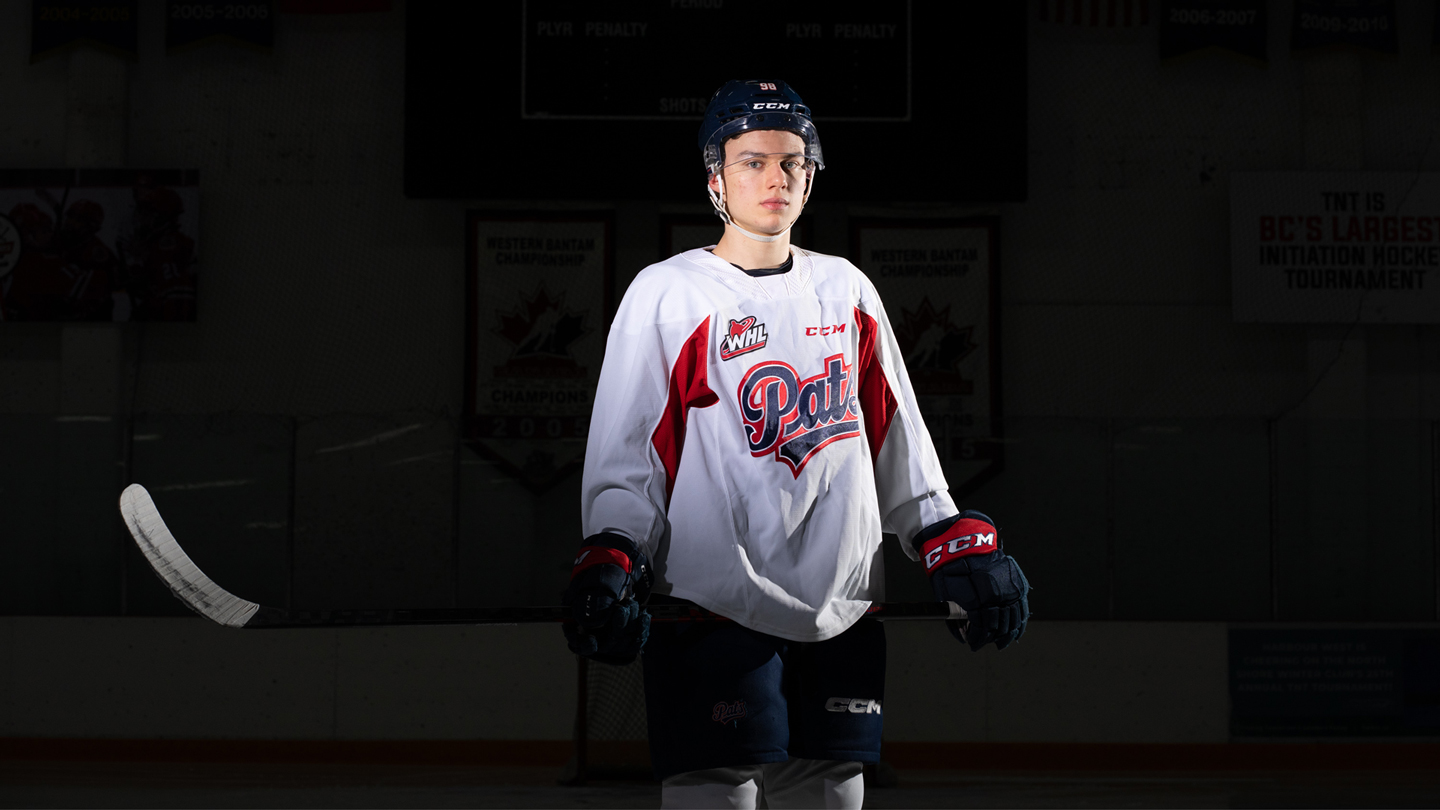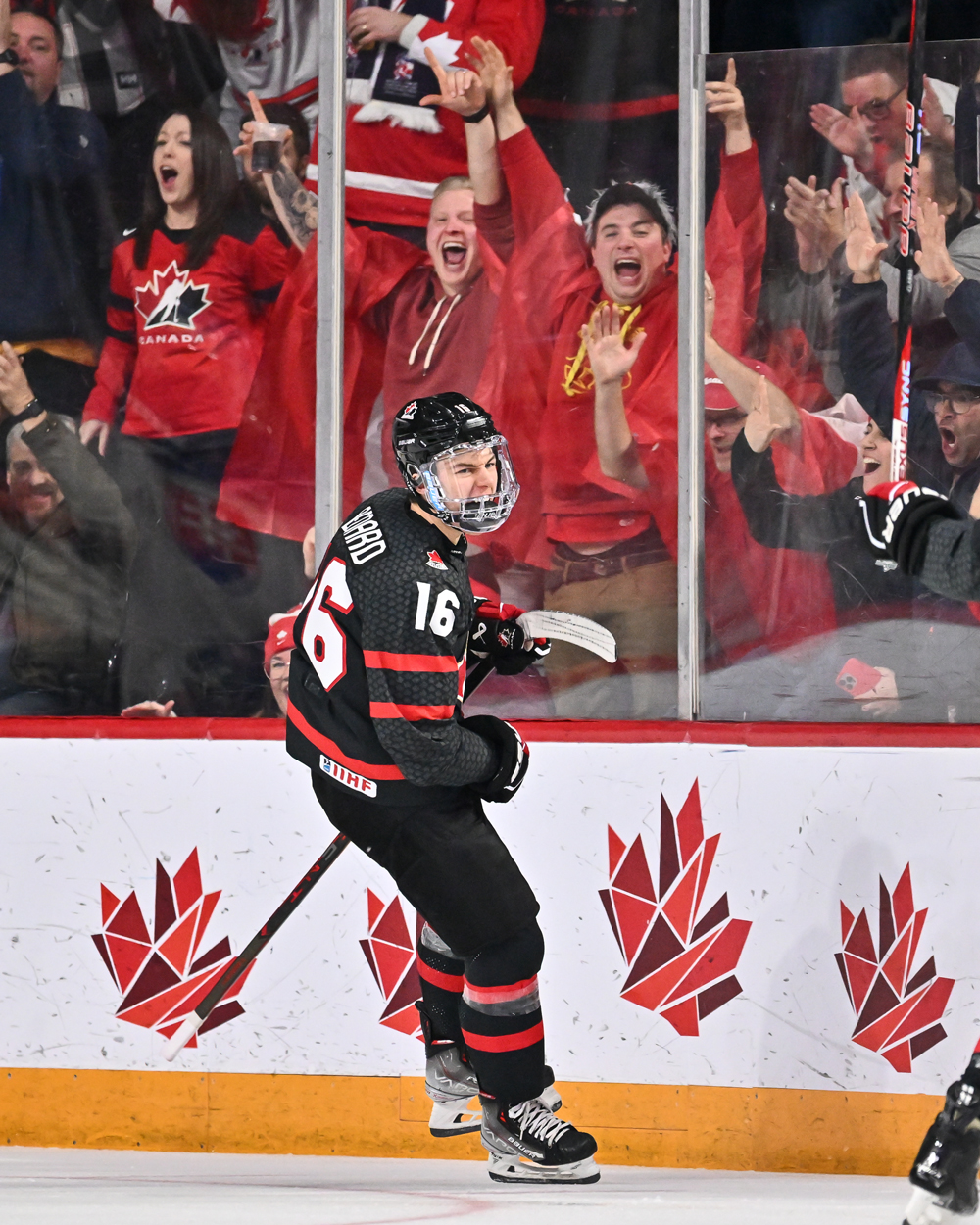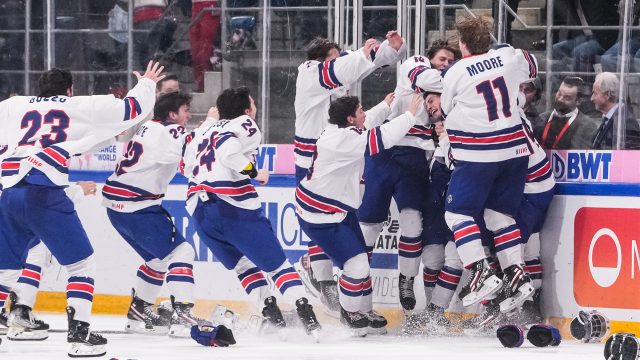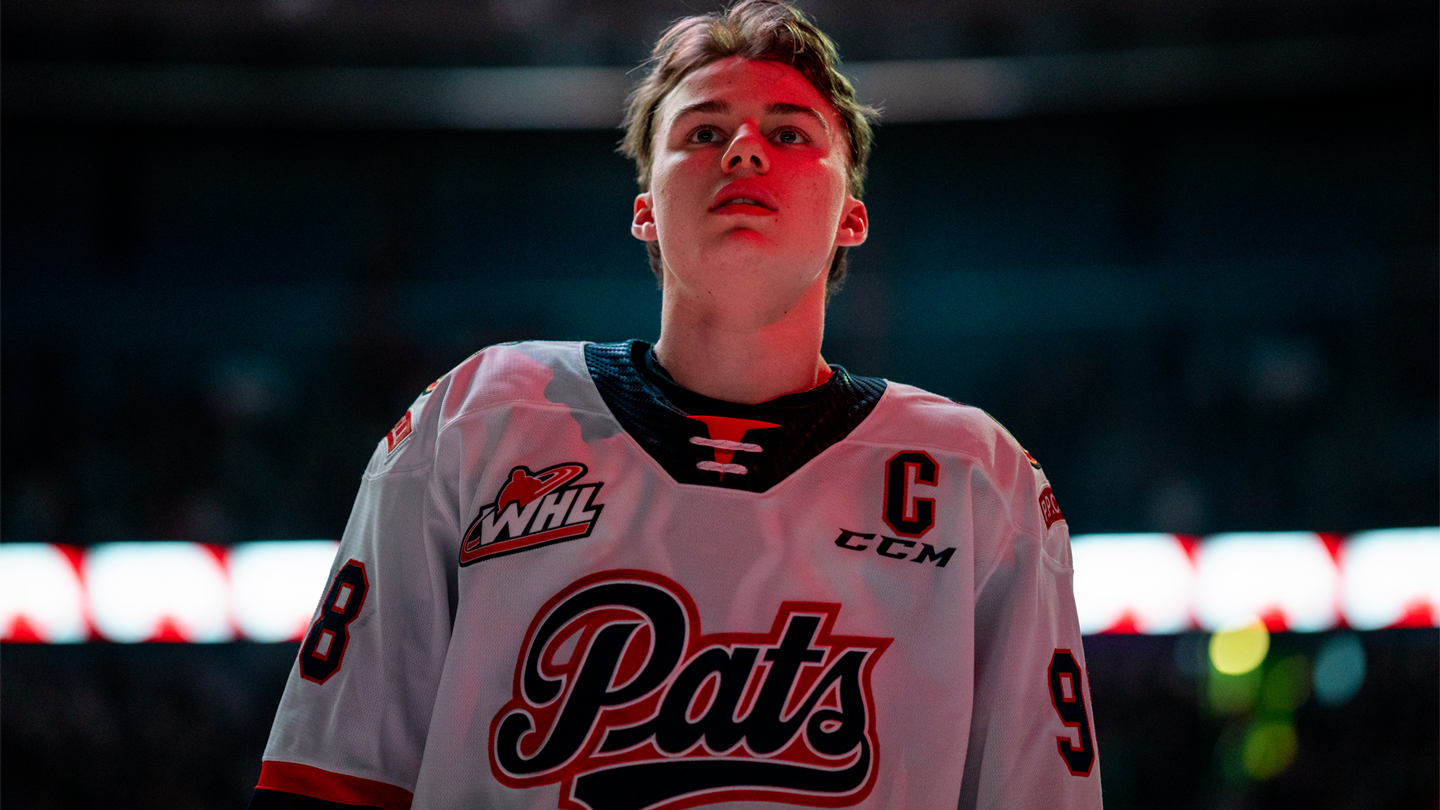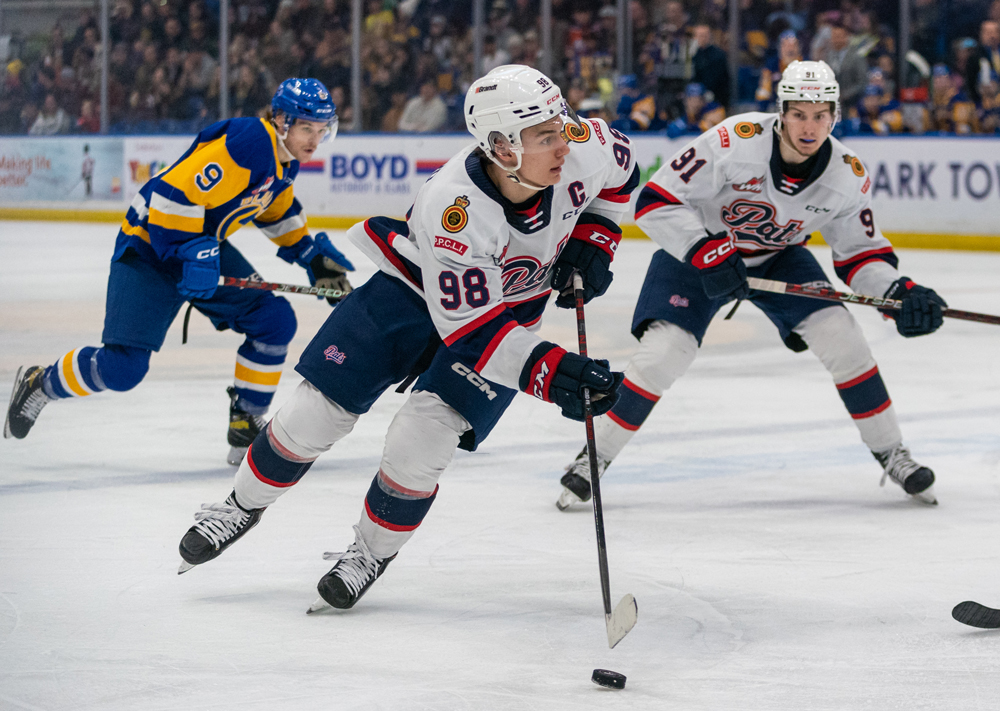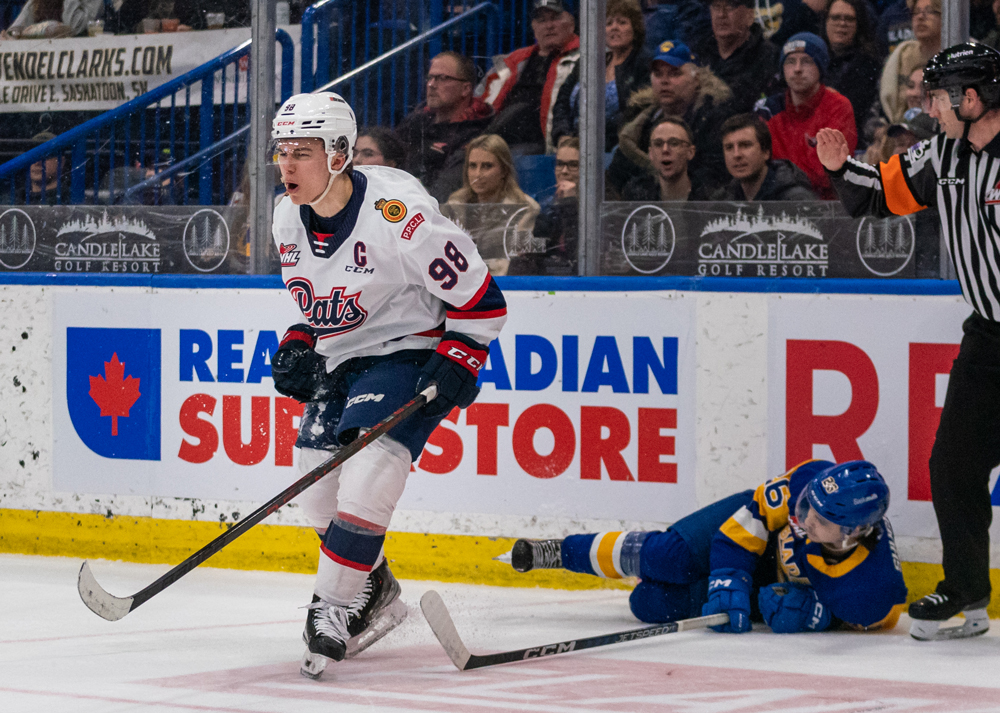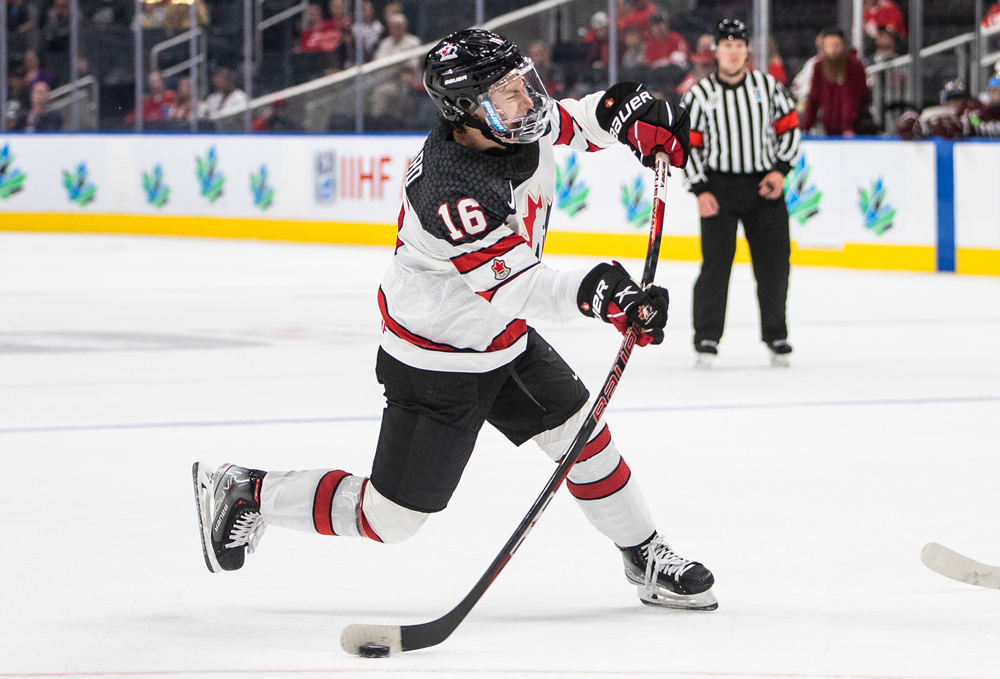T
he moment Bedard first laid eyes on the building that was to house his WHL legacy, it wasn’t the weight of the moment or the new pressures heaped on his shoulders that struck him. It was the paint job. “I was surprised the building was orange,” he says with a laugh, thinking back to his first day in Regina. “It was different. I’d never seen that.”
The Halloween vibe of his new home barn was hardly the only thing that was different about Bedard’s first foray into the WHL. His debut game for the Pats came a year to the day after the COVID-19 pandemic forced the WHL to suspend, and ultimately cancel, its 2019-20 season. The league returned for what was to be Bedard’s rookie year in 2020-21, but not in a form recognizable to the junior hockey faithful. Instead of 68 games, teams played just 24. Instead of travelling to face clubs across the country, newly aligned divisions were formed, hubs that housed teams from around the area — for Regina, this meant the seven WHL teams from Saskatchewan and Manitoba all playing out of that orange Regina rink. And instead of a title hunt, the campaign was officially dubbed a “developmental season.” No champion was crowned.
Still, for a bright-eyed Bedard, it was a dream. “When I got in the rink, it was super nice. I mean, I love it,” he says. “You know, obviously the first year [there were] no fans, so it was a little different, but it was pretty cool. We were in the dorms and with the guys every day, so it was a lot of fun.” As everyone else around the junior hockey world was trying to get their heads around what this new season would look like, Bedard was still getting over the thrill of simply beginning this novel journey. “I’d never been to Saskatchewan at all, so all that was super new to me,” he says. “I’d heard a lot, obviously. It’s a very storied franchise, and everything they’ve done, their long history, is pretty cool. So when I was drafted, I was super, super stoked.”
John Paddock, the longtime general manager of the Pats, who returned to the bench as head coach of the club during Bedard’s second season, remembers that excitement the first time their No. 1 pick took to the ice as a member of the club. “He was clearly a step above everybody else,” Paddock says. “I remember talking to [then-head coach] Dave Struch after practice. He said, ‘What do you think?’
“I said, ‘Well, the 15-year-old looks like a 20-year-old, and the 20-year-old looks like a 15-year-old.’ That’s what he was. You could tell that he was the most talented player on the ice.”


